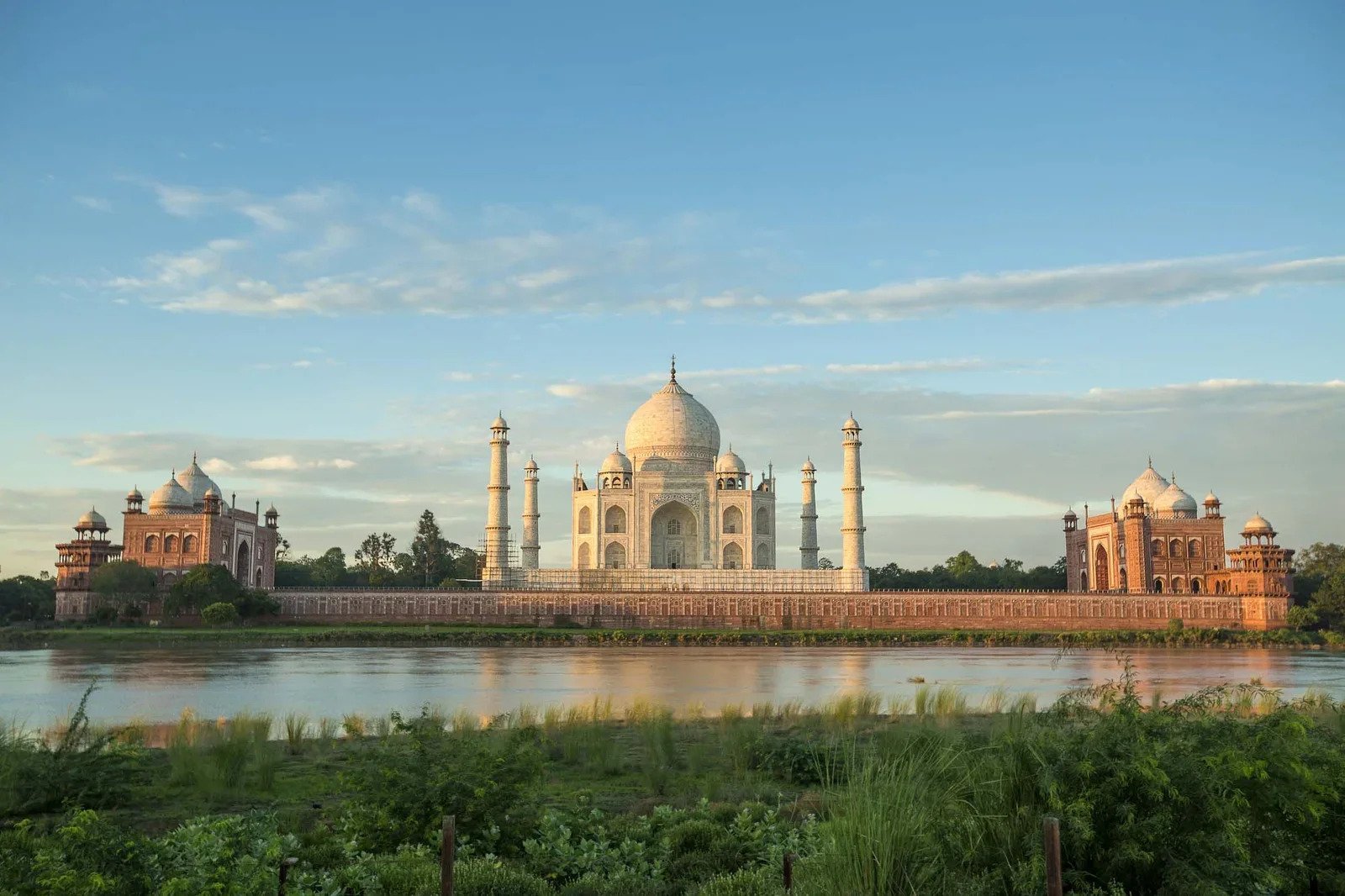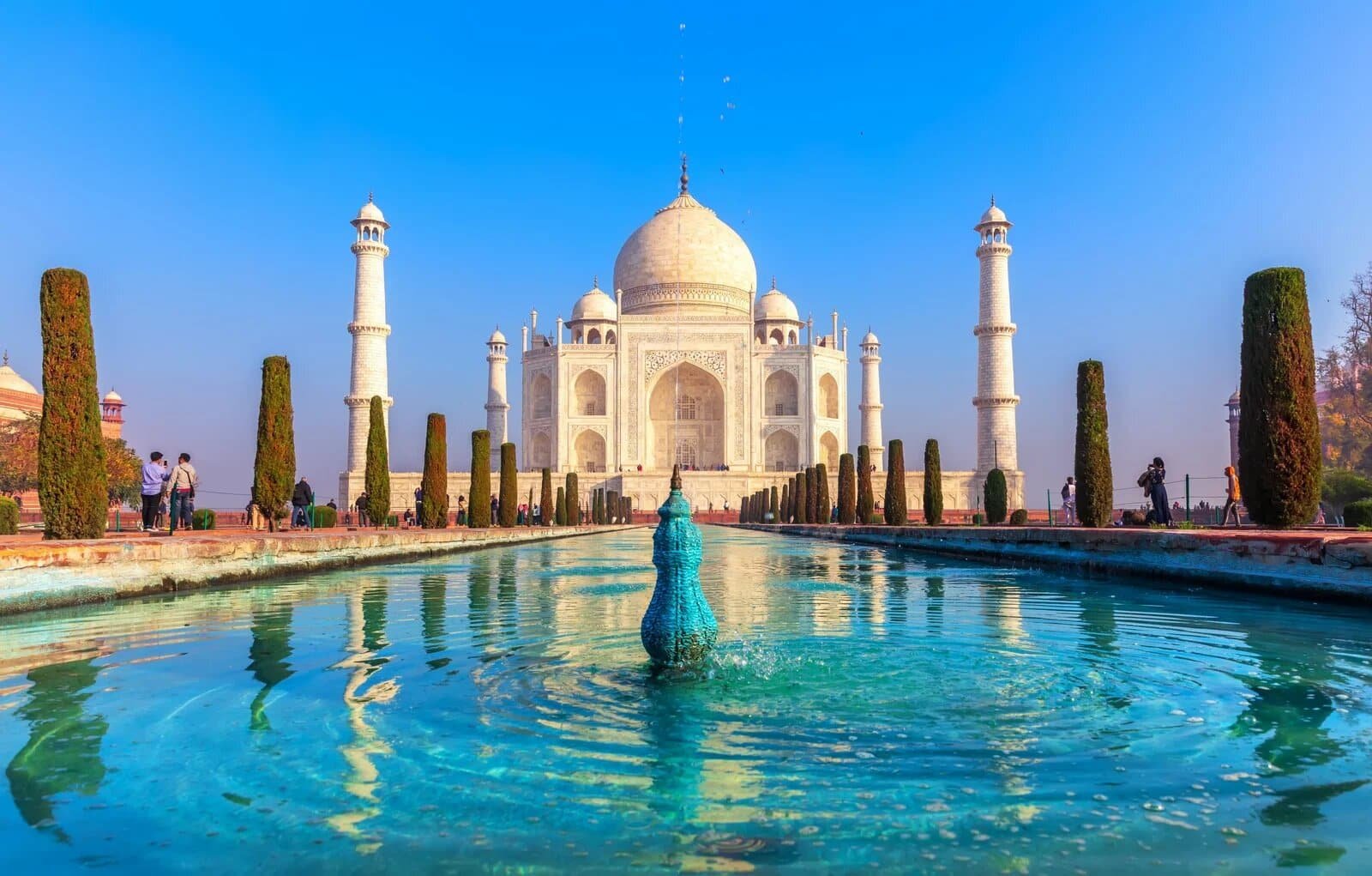The Taj Mahal, an epitome of architectural splendor, stands proudly in the city of Agra, India. This iconic monument, renowned for its mesmerizing beauty and historical significance, attracts millions of visitors from around the globe. But beyond the grandeur of the Taj Mahal, Agra itself offers a tapestry of history, culture, and vibrant local life. In this comprehensive guide, we will delve into the magnificence of the Taj Mahal and the myriad wonders of Agra.

The Splendor of the Taj Mahal
Historical Background
Commissioned by Emperor Shah Jahan in 1632, the Taj Mahal was built as a mausoleum for his beloved wife, Mumtaz Mahal. This UNESCO World Heritage site is not only a symbol of eternal love but also a masterpiece of Mughal architecture. Constructed entirely out of white marble, the Taj Mahal took approximately 22 years to complete, with the help of over 20,000 artisans and craftsmen.
Architectural Marvel
The Taj Mahal’s design harmoniously blends Persian, Islamic, and Indian architectural styles. Its symmetrical layout, intricate inlay work, and the iconic marble dome create a breathtaking sight, especially during sunrise and sunset when the monument reflects various hues of the sky. The four minarets, standing tall at each corner of the platform, further enhance its regal appearance.
The Main Structure
The central dome, rising to a height of 73 meters, is the most striking feature of the Taj Mahal. Beneath it lies the cenotaph of Mumtaz Mahal, with the cenotaph of Shah Jahan placed beside her. The actual tombs are located in a lower chamber, out of public view. The walls of the mausoleum are adorned with intricate calligraphy of Quranic verses and delicate floral patterns inlaid with precious and semi-precious stones.

The Gardens
The Taj Mahal is set amidst a vast Mughal garden, known as the Charbagh, which is divided into four parts by raised pathways. These gardens, inspired by Persian paradise garden designs, symbolize the concept of paradise in Islamic culture. The lush greenery, fountains, and reflective pools add to the serene ambiance of the monument.
The Symbolism and Cultural Impact
The Taj Mahal is not just an architectural wonder; it is a symbol of India’s rich history and cultural heritage. It represents the zenith of Mughal art and architecture and continues to inspire artists, poets, and lovers worldwide. The monument’s universal appeal lies in its timeless beauty and the poignant love story that it immortalizes.

Agra: Beyond the Taj Mahal
While the Taj Mahal is undoubtedly the crown jewel of Agra, the city itself has a lot more to offer. With its rich history, vibrant markets, and delectable cuisine, Agra provides a holistic experience for travelers.
Historical Sites
Agra Fort
Located just 2.5 kilometers from the Taj Mahal, Agra Fort is another UNESCO World Heritage site. This massive red sandstone fort was the main residence of the Mughal emperors until the capital shifted to Delhi. Within its walls, you will find an array of beautiful palaces, audience halls, and mosques, including the Jahangir Mahal, Khas Mahal, and the Diwan-i-Khas.
Fatehpur Sikri
Approximately 40 kilometers from Agra, Fatehpur Sikri is a historic city built by Emperor Akbar. This city, also a UNESCO World Heritage site, was Akbar’s capital for 14 years before being abandoned. The complex boasts numerous impressive structures, such as the Buland Darwaza, Jama Masjid, and the Panch Mahal.
Cultural Experiences

Local Bazaars
Agra’s bustling bazaars are a paradise for shoppers and those looking to immerse themselves in local culture. The Sadar Bazaar, Kinari Bazaar, and Subhash Bazaar offer a variety of goods, from handicrafts and leather products to jewelry and textiles. Don’t forget to haggle to get the best deals!
Cuisine
Agra is a haven for food enthusiasts. The city offers a range of delectable Mughlai dishes, such as biryani, kebabs, and korma. Savor the famous Agra petha, a sweet made from ash gourd, and try the savory street food, including chaat and samosas. The local eateries and high-end restaurants alike provide a culinary journey that is as memorable as the sights.
Modern Attractions
Wildlife SOS
For those interested in wildlife and conservation, a visit to the Wildlife SOS is highly recommended. This organization works towards the rescue and rehabilitation of various wildlife species, including elephants and bears. Visitors can learn about the important conservation efforts and see these majestic animals up close.
Mughal Heritage Walk
The Mughal Heritage Walk is a community-based tourism initiative that offers guided tours through Kachhpura village. This tour provides insights into the lesser-known Mughal monuments and the local lifestyle. It’s a great way to experience Agra beyond the usual tourist spots and support local communities.
Planning Your Visit
Best Time to Visit
The ideal time to visit Agra is between October and March, when the weather is pleasant and conducive to sightseeing. Summers can be extremely hot, with temperatures soaring above 40 degrees Celsius, while the monsoon season brings heavy rains, which might hinder travel plans.
Conclusion
The Taj Mahal and Agra together create a compelling destination that combines unparalleled architectural beauty with rich historical and cultural experiences. While the Taj Mahal remains the centerpiece, exploring the depths of Agra reveals a city steeped in legacy, vibrant local life, and culinary delights. Whether you’re an architecture enthusiast, history buff, or a curious traveler, Agra promises a journey filled with unforgettable moments and a deeper appreciation of India’s glorious past.
 Toll-Free 1-855-952-6526
Toll-Free 1-855-952-6526 +44 1753 201 201
+44 1753 201 201  61-2-86078986
61-2-86078986  + 44 ( 0 ) 7739 716978
+ 44 ( 0 ) 7739 716978 











